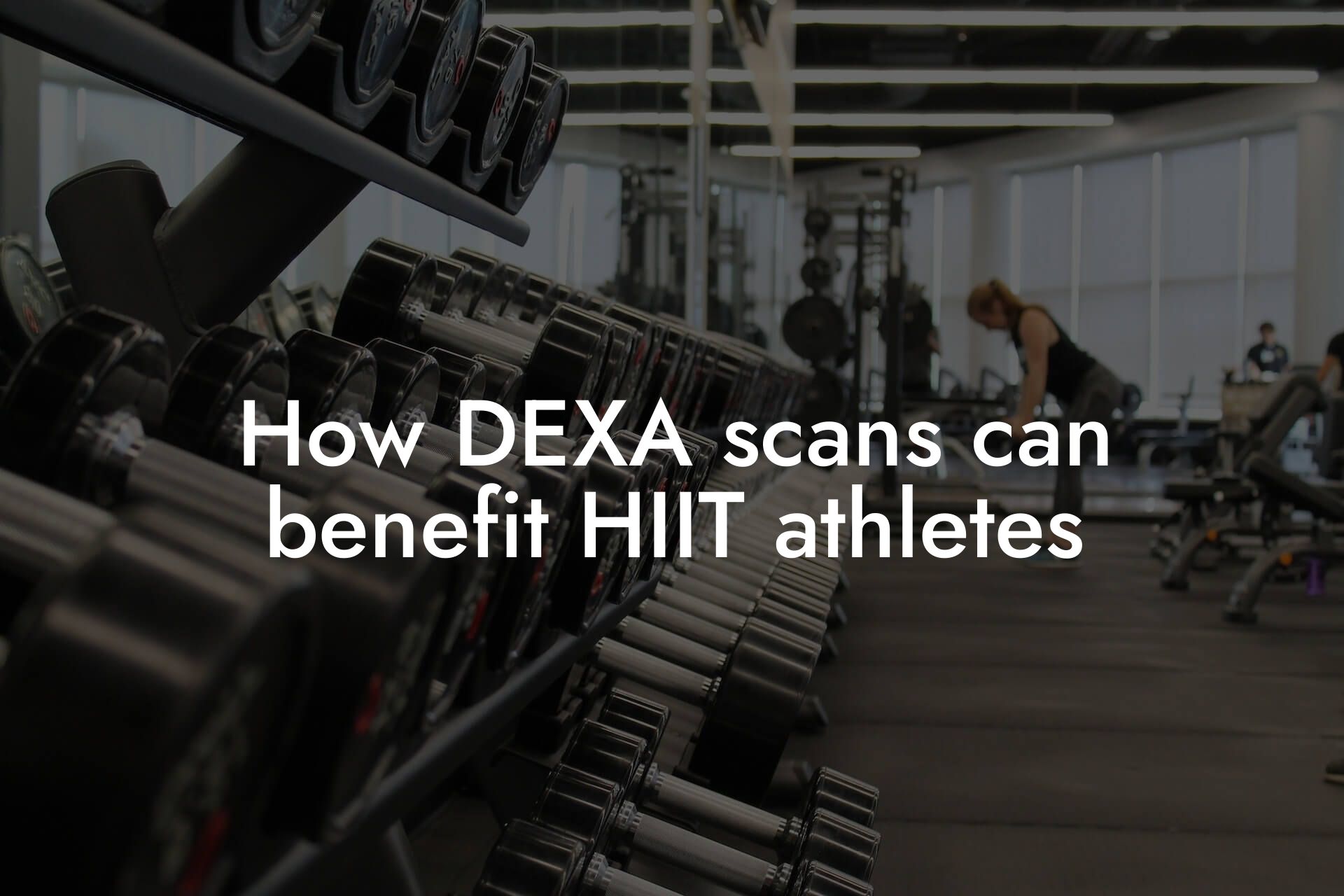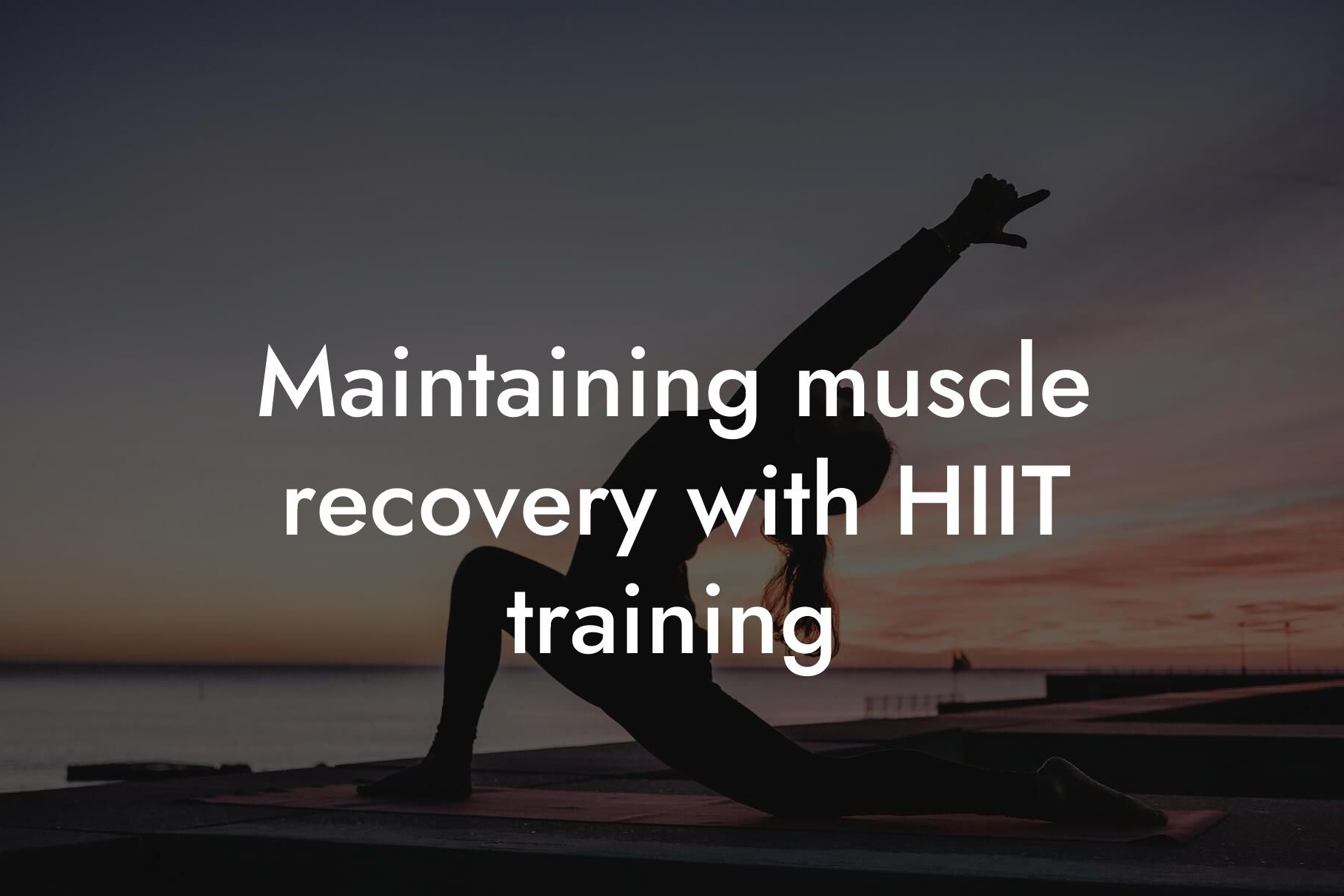As a high-earning professional, you understand the importance of maintaining a healthy and fit physique. One of the most effective ways to achieve this is through High-Intensity Interval Training (HIIT) workouts. However, to get the most out of HIIT, it's crucial to strike a balance between strength and speed. In this article, we'll delve into the world of HIIT and provide you with a comprehensive guide on how to balance strength and speed for optimal results.
Table of Contents
- What is HIIT?
- The Importance of Balancing Strength and Speed in HIIT
- Benefits of Strength Training in HIIT
- Benefits of Speed Training in HIIT
- How to Balance Strength and Speed in HIIT Workouts
- Sample HIIT Workout Routine
- Take Your Fitness to the Next Level with Tano Performance Group
- Frequently Asked Questions
What is HIIT?
HIIT is a type of workout that involves short bursts of high-intensity exercise followed by brief periods of rest or low-intensity exercise. This type of training has gained popularity in recent years due to its ability to improve cardiovascular health, increase caloric burn, and enhance muscular endurance. HIIT workouts typically last between 15-30 minutes and can be modified to suit different fitness levels.
The Importance of Balancing Strength and Speed in HIIT
When it comes to HIIT, many individuals focus solely on speed, neglecting the importance of strength. However, strength training is essential for building muscle mass, increasing bone density, and improving overall athleticism. On the other hand, speed training is critical for enhancing cardiovascular fitness and burning calories. A balanced approach that incorporates both strength and speed exercises is essential for achieving optimal results in HIIT workouts.
Benefits of Strength Training in HIIT
Incorporating strength training into your HIIT workouts can have a significant impact on your overall fitness. Some of the benefits of strength training in HIIT include:
• Increased muscle mass: Strength training helps build muscle mass, which can improve overall athleticism and enhance metabolism.
• Improved bone density: Resistance training can help increase bone density, reducing the risk of osteoporosis and fractures.
• Enhanced power: Strength training can improve power output, allowing you to perform daily tasks with more efficiency and effectiveness.
Benefits of Speed Training in HIIT
Speed training is an essential component of HIIT workouts, offering numerous benefits, including:
• Improved cardiovascular fitness: Speed training can help improve cardiovascular health, increasing heart rate and blood flow.
• Increased caloric burn: High-intensity speed training can burn a significant number of calories, both during and after exercise.
• Enhanced agility: Speed training can improve agility and quickness, making daily activities more manageable.
How to Balance Strength and Speed in HIIT Workouts
So, how do you balance strength and speed in HIIT workouts? Here are some tips to get you started:
• Alternate between strength and speed exercises: Incorporate strength exercises like squats, lunges, and deadlifts into your HIIT workout, followed by speed exercises like sprints, burpees, or jump squats.
• Incorporate compound exercises: Compound exercises like squats, deadlifts, and bench press work multiple muscle groups at once, improving overall strength and power.
• Use resistance bands or weights: Adding resistance bands or weights to your HIIT workout can increase the intensity and improve strength gains.
• Focus on explosive power: Incorporate exercises that require explosive power, such as box jumps or depth jumps, to improve speed and agility.
Sample HIIT Workout Routine
Here's a sample HIIT workout routine that balances strength and speed:
Warm-up: 5-minute jog or jumping jacks
Strength Exercise: Squats (3 sets of 10 reps)
Speed Exercise: Sprints (3 sets of 20 seconds, rest for 40 seconds)
Strength Exercise: Deadlifts (3 sets of 10 reps)
Speed Exercise: Burpees (3 sets of 10 reps, rest for 30 seconds)
Cool-down: 5-minute stretching
Balancing strength and speed in HIIT workouts is crucial for achieving optimal results. By incorporating both strength and speed exercises into your HIIT routine, you can improve overall fitness, increase muscle mass, and enhance cardiovascular health. Remember to alternate between strength and speed exercises, incorporate compound exercises, and focus on explosive power to get the most out of your HIIT workouts.
Take Your Fitness to the Next Level with Tano Performance Group
At Tano Performance Group, we understand the importance of balancing strength and speed in HIIT workouts. Our team of experts uses state-of-the-art DEXA machines to provide comprehensive body assessments, helping high-earning professionals like you achieve their fitness goals. Contact us today to learn more about our services and take your fitness to the next level.
Frequently Asked Questions
What is HIIT and how does it benefit my fitness goals?
HIIT stands for High-Intensity Interval Training, a type of workout that involves short bursts of high-intensity exercise followed by brief periods of rest or low-intensity exercise. This type of training is beneficial for improving cardiovascular health, increasing caloric burn, and enhancing muscular endurance. As a high-earning professional, HIIT workouts can be an excellent way to fit in an effective workout despite a busy schedule.
Why is it important to balance strength and speed in HIIT workouts?
Balancing strength and speed in HIIT workouts is crucial because it allows you to maximize the benefits of each component. Strength training helps build muscle mass and increase bone density, while speed training improves cardiovascular fitness and boosts caloric burn. By balancing both, you can achieve a more comprehensive fitness level and reduce the risk of injury or plateaus.
How do I know if I'm doing HIIT correctly?
To ensure you're doing HIIT correctly, focus on the following key elements: high-intensity exercise, brief rest periods, and proper form. Make sure you're pushing yourself to your maximum capacity during the high-intensity intervals, and take adequate rest to allow for proper recovery. It's also essential to focus on proper form and technique to avoid injury.
What are some examples of strength exercises I can incorporate into my HIIT workout?
Examples of strength exercises that can be incorporated into a HIIT workout include squats, lunges, deadlifts, bench press, rows, and burpees. These exercises work multiple muscle groups at once, making them effective for building strength and endurance. You can also incorporate resistance band exercises, kettlebell swings, or bodyweight exercises like push-ups and pull-ups.
How do I incorporate speed training into my HIIT workout?
To incorporate speed training into your HIIT workout, focus on exercises that require quick movements and rapid contractions. Examples include sprints, agility drills, jump squats, box jumps, and mountain climbers. These exercises improve cardiovascular fitness, increase caloric burn, and enhance muscular endurance.
What is the ideal ratio of strength to speed exercises in a HIIT workout?
The ideal ratio of strength to speed exercises in a HIIT workout varies depending on your fitness goals and current fitness level. A general rule of thumb is to allocate 60-70% of your workout to strength exercises and 30-40% to speed exercises. However, if you're a beginner, you may want to start with a 50/50 ratio and adjust as needed.
How often should I do HIIT workouts to see results?
To see results from HIIT workouts, aim to do them 2-3 times per week, with at least one day of rest in between. This allows for adequate recovery time and prevents overtraining. As you get more comfortable with HIIT, you can gradually increase the frequency and intensity of your workouts.
Can I do HIIT workouts at home, or do I need to go to a gym?
You can do HIIT workouts at home or in a gym, depending on your preference. If you're short on time or prefer working out in the comfort of your own home, you can create a HIIT workout using bodyweight exercises, resistance bands, or minimal equipment like dumbbells or a jump rope. If you prefer a more structured environment, a gym can provide access to a variety of equipment and trained instructors.
How do I modify HIIT workouts to suit my fitness level?
To modify HIIT workouts to suit your fitness level, start by adjusting the intensity and duration of your workouts. If you're a beginner, start with shorter intervals and gradually increase the duration as you build endurance. You can also modify exercises to make them easier or more challenging, depending on your fitness level.
What are some common mistakes to avoid in HIIT workouts?
Common mistakes to avoid in HIIT workouts include poor form, inadequate warm-up and cool-down, and pushing yourself too hard too quickly. It's essential to focus on proper form and technique to avoid injury, and to gradually increase the intensity and duration of your workouts to allow for proper adaptation.
How do I track my progress and measure the effectiveness of my HIIT workouts?
To track your progress and measure the effectiveness of your HIIT workouts, use a combination of metrics such as weight, body fat percentage, measurements, and performance metrics like time, distance, or reps. You can also track your workouts using a fitness tracker or mobile app, and take progress photos to visualize your results.
Can I do HIIT workouts if I have any underlying health conditions?
If you have any underlying health conditions, it's essential to consult with a healthcare professional before starting a HIIT workout program. They can help you determine the safest and most effective exercises for your condition, and provide guidance on modifying your workouts to accommodate any physical limitations.
How do I incorporate active recovery into my HIIT workout routine?
To incorporate active recovery into your HIIT workout routine, focus on low-intensity exercises like yoga, stretching, or light cardio. These exercises help promote blood flow, reduce muscle soreness, and aid in recovery. You can also incorporate activities like foam rolling, massage, or self-myofascial release to aid in recovery.
What are some common myths about HIIT workouts that I should be aware of?
Common myths about HIIT workouts include the idea that HIIT is only for advanced athletes, that it's too intense for beginners, or that it's only effective for weight loss. However, HIIT can be modified to suit any fitness level, and it's an effective way to improve cardiovascular fitness, increase strength, and enhance overall fitness.
How do I stay motivated and consistent with my HIIT workout routine?
To stay motivated and consistent with your HIIT workout routine, set specific and achievable goals, find a workout buddy or accountability partner, and track your progress. You can also reward yourself for reaching milestones, and mix up your workouts to avoid plateaus and prevent boredom.
Can I do HIIT workouts with a partner or in a group setting?
Yes, you can do HIIT workouts with a partner or in a group setting. In fact, working out with others can help increase motivation, accountability, and social support. Many gyms and fitness studios offer group HIIT classes, or you can find a workout buddy or join a fitness community to stay motivated and engaged.
How do I incorporate nutrition and supplementation into my HIIT workout routine?
To incorporate nutrition and supplementation into your HIIT workout routine, focus on consuming a balanced diet that includes lean protein, complex carbohydrates, and healthy fats. You can also consider supplements like protein powder, creatine, or branched-chain amino acids (BCAAs) to aid in recovery and muscle growth.
What are some common injuries associated with HIIT workouts, and how can I prevent them?
Common injuries associated with HIIT workouts include shin splints, knee pain, and muscle strains. To prevent these injuries, focus on proper form and technique, warm up and cool down adequately, and incorporate exercises that strengthen your core and improve flexibility.
How do I adjust my HIIT workout routine as I get older?
As you get older, it's essential to adjust your HIIT workout routine to accommodate any physical changes or limitations. This may include reducing the intensity or frequency of your workouts, incorporating more low-impact exercises, or focusing on exercises that improve flexibility and balance.
Can I do HIIT workouts during pregnancy or postpartum?
If you're pregnant or postpartum, it's essential to consult with a healthcare professional before starting or continuing a HIIT workout routine. They can help you determine the safest and most effective exercises for your condition, and provide guidance on modifying your workouts to accommodate any physical limitations.
How do I incorporate HIIT workouts into my busy schedule?
To incorporate HIIT workouts into your busy schedule, focus on finding a workout routine that can be completed in 20-30 minutes, and schedule it into your daily planner or calendar. You can also consider working out during your lunch break, or finding a workout buddy to help keep you accountable.
Here are some related articles you might love...
- How DEXA scans can benefit HIIT athletes
- Maintaining muscle recovery with HIIT training
- Improving cardiovascular endurance with HIIT
- The role of body composition in HIIT performance
- The importance of bone density in HIIT fitness
- Strength training tips to enhance HIIT performance
- Reducing body fat for better HIIT workout results
- Preventing injuries during HIIT sessions
- Nutrition strategies for HIIT enthusiasts
Zak Faulkner
Zak Faulkner is a leading authority in the realm of physical health and body composition analysis, with over 15 years of experience helping professionals optimise their fitness and well-being. As one the experts behind Tano Performance Group, Zak has dedicated his career to providing in-depth, science-backed insights that empower clients to elevate their physical performance and overall health.
With extensive knowledge of DEXA technology, Zak specializes in delivering comprehensive body assessments that offer precise data on body fat, muscle mass, bone density, and overall physique. His expertise enables individuals to make informed decisions and achieve their fitness goals with accuracy and confidence. Zak’s approach is rooted in a deep understanding of human physiology, combined with a passion for helping clients unlock their full potential through personalised strategies.
Over the years, Zak has earned a reputation for his commitment to excellence, precision, and client-focused service. His guidance is trusted by top professionals who demand the best when it comes to their health. Whether advising on fitness programs, nutritional strategies, or long-term wellness plans, Zak Faulkner’s insights are a valuable resource for anyone serious about taking their health and fitness to the next level.
At Tano Performance Group, Zak continues to lead our Content Team revolutionising how professionals approach their physical health, offering unparalleled expertise that drives real results.




